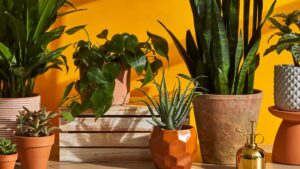Our urban homes are gas swamps! Do you know why?
Along with polluted air that comes in through open windows, consider the ammonia from those toilet cleaners that promise to make bathrooms sparkle. There may be garbage piled up that spews formaldehyde since municipal workers are on strike!
Not to mention the carbon dioxide released by our LPG stoves and the benzene emitted by our washing powders and detergents.
Therefore, it is no surprise that you have itchy eyes or skin, or that you often have allergies and colds.
Even if you have given up trying to fix these issues with an outdoor garden patch due to living in an apartment and having limited space, it’s time to give it another try.
In this article, we have mentioned indoor plants that purify the air in the home and are also easy to care for and maintain.
Best Indoor Plants For Health
1. Spider plants
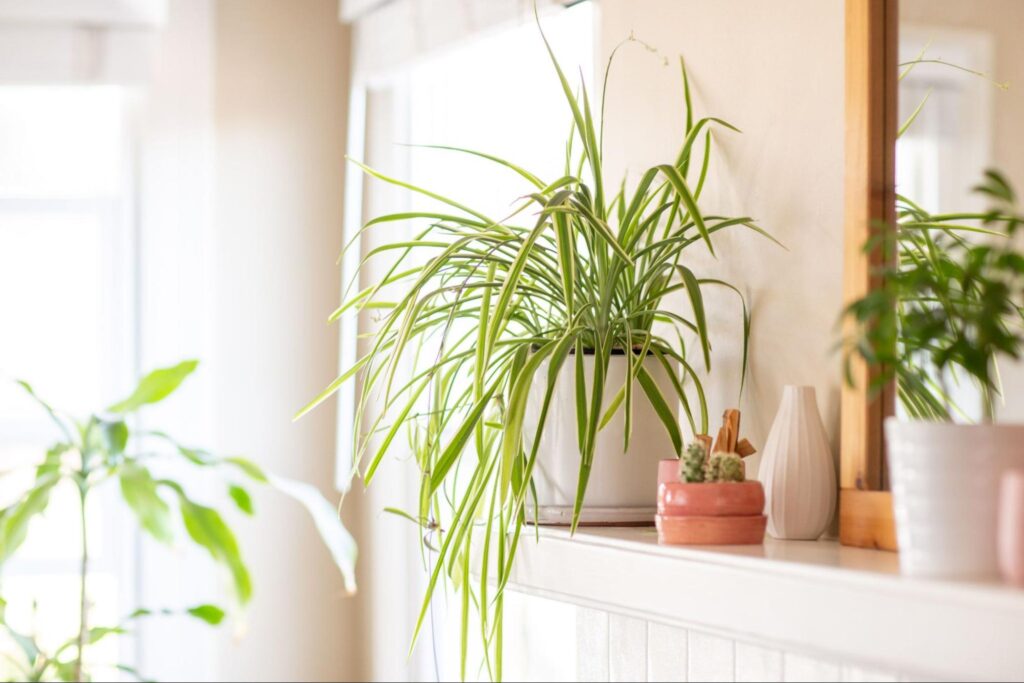
Spider plants are the best indoor plants to remove toxins from the air. It removes the impurities that enter through different mediums. Such as shoes, fabrics, and food. In addition, it targets the carbon monoxide that is present in the air.
You also need not care much about this plant. You can keep them in a place with less sunlight. They are suitable for any type of soil and need less watering.
2. Aloe Vera
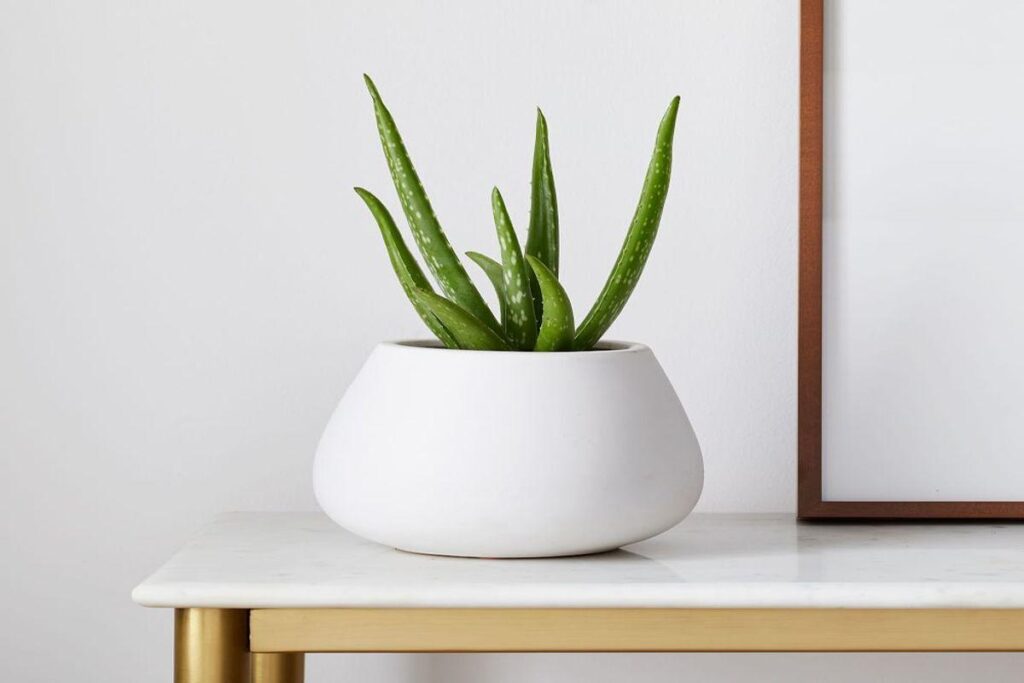
We all grew up with these plants. Needless to mention it has several health benefits. The inner part of the leaf contains a clear, gel-like substance that can be directly applied to the skin. It is typically used for treating burns, sunburns, frostbite, psoriasis, and cold sores. In the case of allergies, make sure you speak to your physician first.
For better health, you can even mix it in your food. This plant not only treats skin allergies but also cleans your indoor air. However, Aloe vera needs to be watered regularly and under indirect sunlight.
If you live in a warm climate, you can grow aloe vera outside without any worry. The USDA zone has to be 10 or even higher than that.
Tip:
Pick a terra cotta pot or a planter that is made with another quick absorbent material for this plant (the same tip goes for any other plant that is tender like aloe vera). These will allow the soil to remain dry the majority of the time. Plastic pots can do the job, but they will hold the moisture of the soil for longer.
3. Lavender
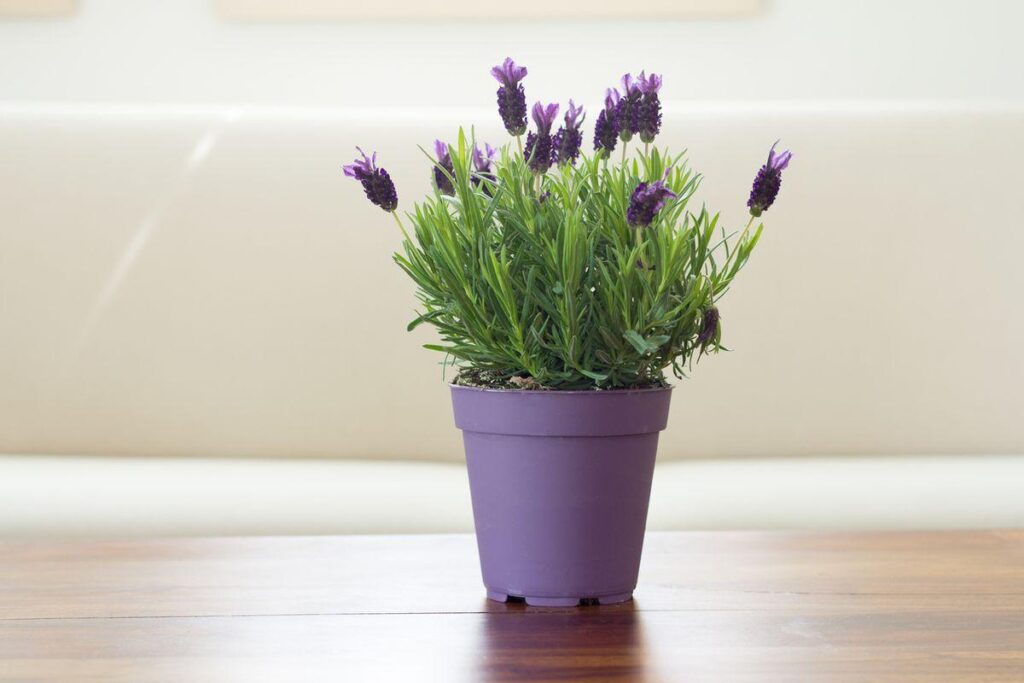
This beautiful plant not only looks good but also provides a pleasant aroma to your house. They are well-known for their qualities to relieve stress and mental health issues. Along with other benefits, this plant makes a good bedroom companion.
A whiff of lavender is said to ease restlessness, nervousness, anxiety, depression, and insomnia.
Just place them in your bedroom to release stress and anxiety with its blissful fragrance. However, they require a lot of sunlight and well-drained soil to grow.
So you need to find a spot where your lavender plant can receive as much sunlight as possible. Consider a south-facing window as they are known for having the best sunlight reach indoors at the best times of the day. Just make sure your plant gets at least 3 hours of sunlight daily.
Tip:
Move your plant once a week to ensure your lavender is flowering and growing in a uniform manner.
4. Snake Plant
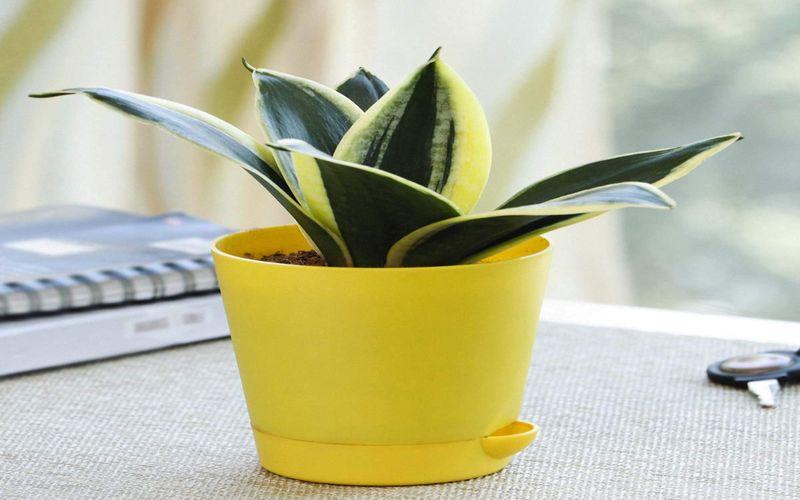
The snake plant is popularly known as “Mother-in-law’s tongue.” They are highly suitable to improve indoor air quality.
They function at night by converting toxic substances and carbon dioxide into oxygen. It is a perfect plant to keep in your bedroom for a sound sleep. However, a single plant cannot remove all the harmful substances from the house. Hence, try to place two or more plants in a different area of your home to get the job done.
Snake plants do not need much care. You just need to provide them indirect sunlight and water them occasionally.
Note:
Along with their minimal maintenance, the snake plant is considered relatively safe to have around pets and humans. But they are mildly toxic. Their leaves have a toxin that can cause swelling on the tongue if consumed in large quantities. It’s better if you keep this plant away from kids and curious pets who are inclined to nibble.
5. Rosemary

If you want to improve your concentration, bring Rosemary to your home. They have a memory-boosting fragrance. In addition, they do the job of air freshener for you. For best results, please place them in the study room or living room.
Also, it does not need much water in winter. But you need to pay special attention to the plant in the summer season.
Fun fact:
Rosemarys self-pollinate and allure bees and many other pollinators to the garden. Bring indoor plants outside in the warm season when their buds are open to let the flowers naturally pollinate.
6. Boston Fern
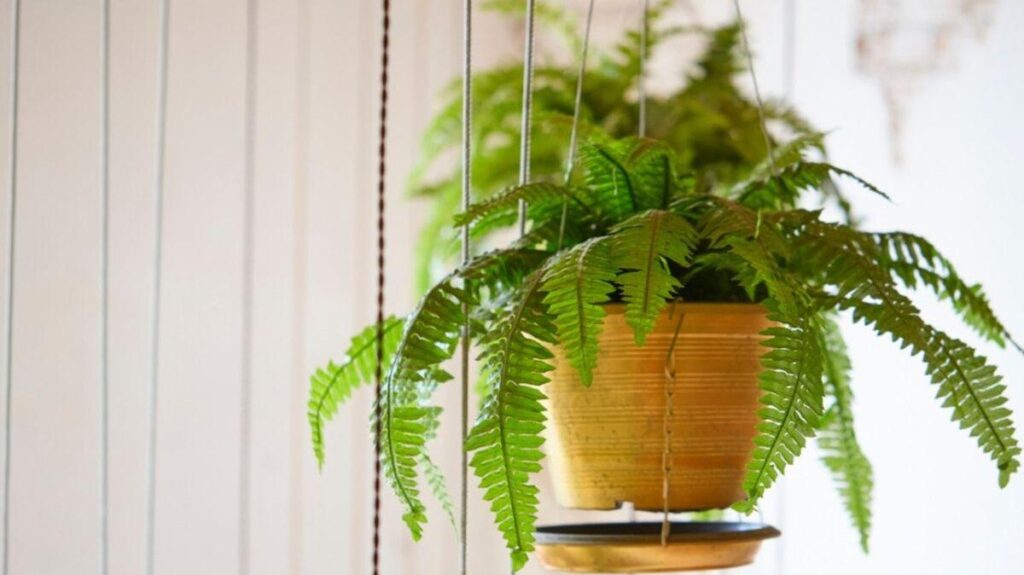
Do you have difficulty in the humid season? Then, Boston fern is perfect for you. Not only will it purify the air but also maintain the humidity level of your room. It is also useful in curing dry skin.
Boston ferns are easy to grow and they need less sunlight and a cool temperature. However, pay attention to the soil type and its condition. Boston ferns like organically enriched and loamy soil with fine drainage. Use a peat-based potting blend with added perlite to improve its drainage ability. Poor soil mix with bad draining qualities can generate root rot, which will eventually kill this plant.
7. Peace Lily
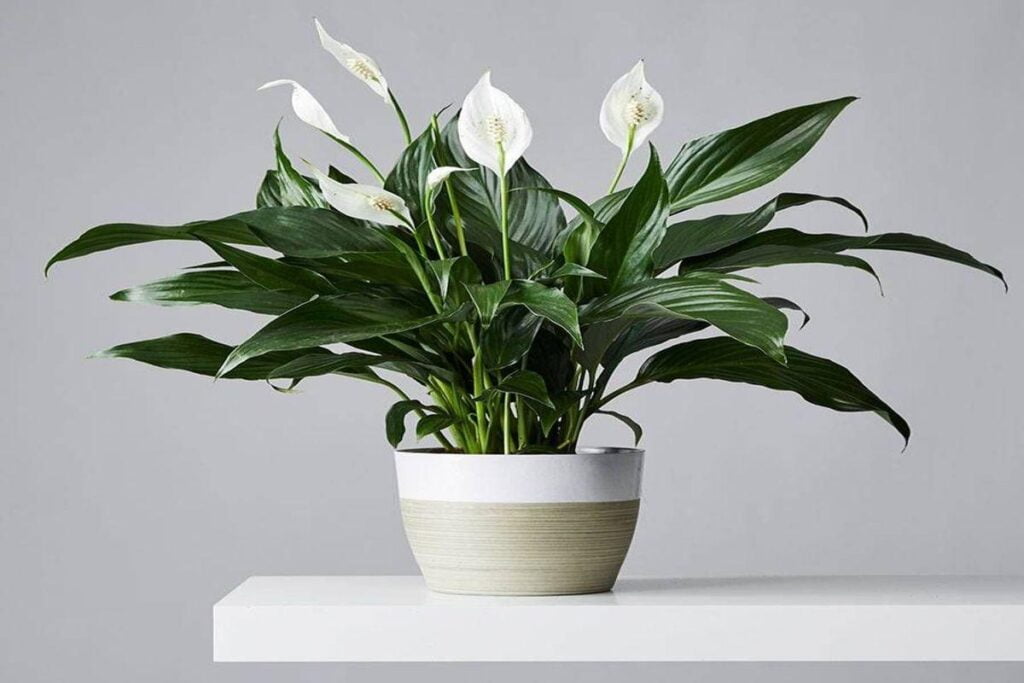
All of us wish to live a life filled with peace and contentment. Peace lily has become universally aligned with these aspirations. So, bring this indoor plant today, and let its elegant dark green leaves soothe your soul. Also, its huge, fragrant flower calms you down at the end of a stressful day!
In addition, Peace lily will help you to beat allergies. It will also clear the air contaminants in your home. Such as benzene and formaldehyde. Peace lilies are shade-loving plants, a perfect addition to the dark corners of your room. Not only that, if these delicate plants stay under the sun for a longer period of time, they may get scorched on the leaves or even dry out their flowers.
8. Lucky Bamboo
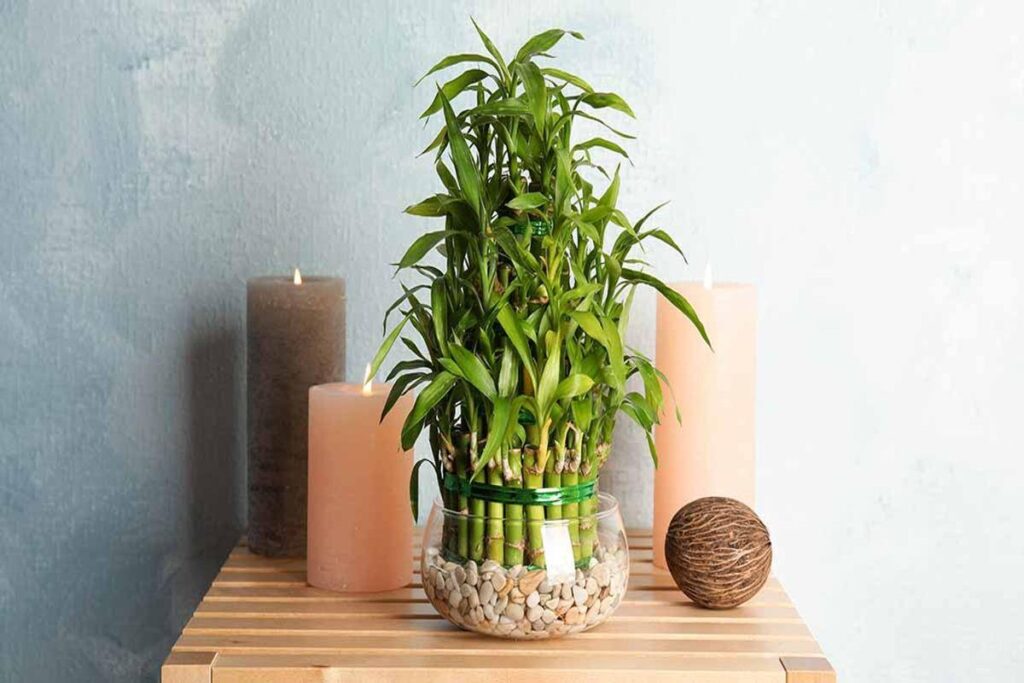
Simply having a name that begins with the word “Lucky” indicates something!
In India, it can be found both in homes and businesses, since it is believed to bring happiness and prosperity with it.
The lucky plant can reach up to 2-3 feet in height. And it is highly recommended by Feng Shui practitioners. In Chinese, it is called Fu Gwey Zhu. Fu means luck and fortune, Grey signifies drawing power and honor, and Zhu denotes Bamboo.
Depending on the number of stalks intertwined, each stalk represents a different level of prosperity and gain according to Feng Shui. Isn’t it Interesting?
If you are growing lucky bamboo in water, the water should be replaced every week. If grown in soil, the soil should be maintained a little moist, so don’t go overboard with the application of water or let it get dry completely. Lucky bamboo does best in partial sunlight and in the temperature range of 20–35°C.
9. Chinese Evergreen

Here is another indoor plant to bring good luck your way!
Chinese evergreens are popular indoor plants across Asia and for good reason too. Not only do they bring prosperity into your home but these perennial herbs are counted among the most durable indoor plants you can ever grow.
Moreover, this plant can tolerate poor light, dry air, and drought very well. Basically, even if you travel around a lot, forget to water the plant, or live in a mostly shady area, the plant holds no grudges and continues to thrive!
They come in lance-shaped leaves in shades of silver, gray, or shades of green.
10. Grape ivy
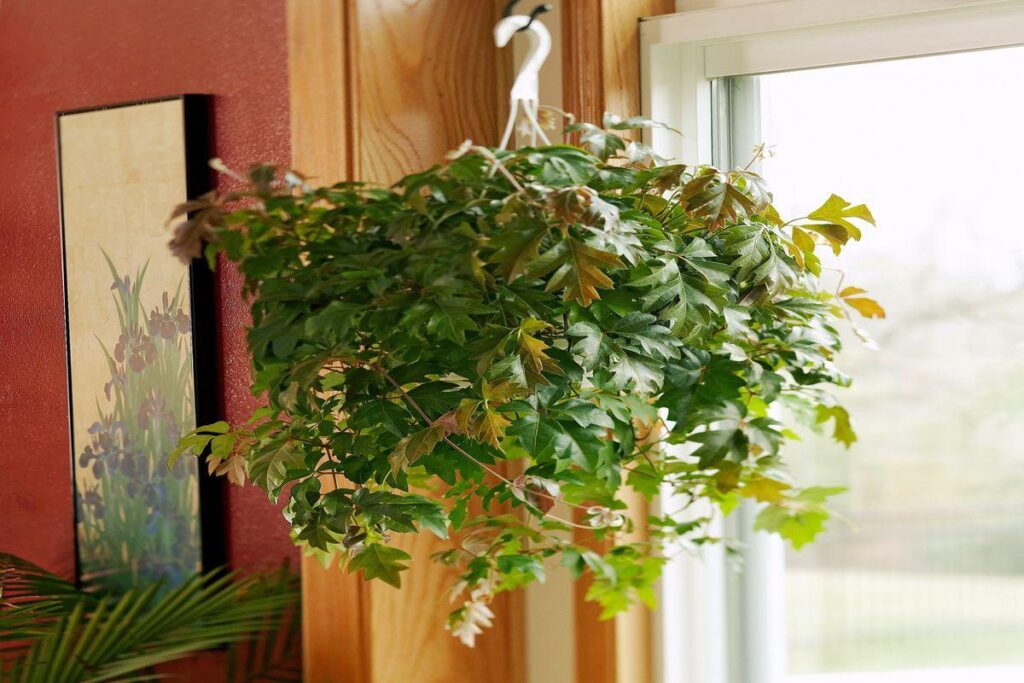
Do you have a bare wall either vertically or horizontally that needs covering? Consider getting a grape ivy plan.
It is a climbing ornamental plant that adds a touch of green to your home and reduces air conditioning costs as well! If you are wondering how it sticks to walls, the answer is calcium carbonate which works as a natural adhesive pad and allows Grape Ivy to adhere to walls without additional support.
If you have asthma or difficulty breathing at night, it can help you sleep better and breathe easier.
It is very sturdy and will tolerate the conditions indoors, so you won’t have to do much to maintain it and therefore it fits into your tight schedule perfectly!
11. Money Plant

Wouldn’t it be nice if plants bore money on their leaves as gifts?
As they don’t, why not go for one where you can imagine the round, plump, flat leaves to actually resemble coins? In addition to being leafy and easy to care for, the plant effectively removes indoor pollutants like formaldehyde and benzene.
Of course, there is a commonly held belief that while the money plant thrives in your house, you will run neither short of money nor friends.
12. Warneck Dracaena
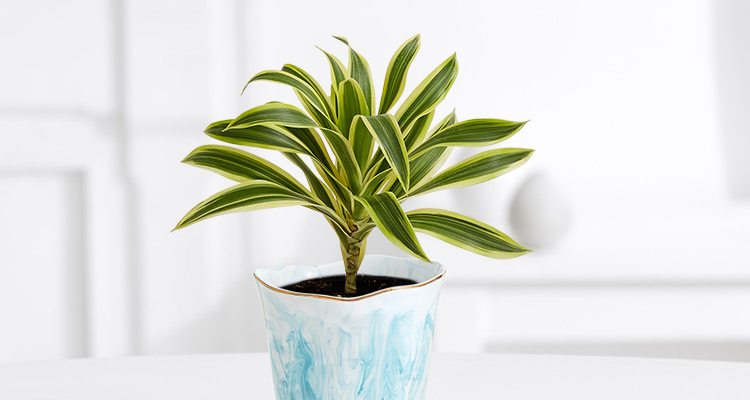
Here is another fuss-free indoor plant to clear the air pollutants such as xylene and toluene. This plant has a huge value attached to it as it successfully tolerates every kind of condition well. It can tolerate low light, bright light, and even neglect!
If the dry atmosphere is your concern, place a few Warneck dracaena houseplants in that area to boost the humidity levels. Many respiratory issues caused by dry air will also stay in control because of this. The usage of this plant found a reduction in the incidents of flue, dry skin, dry coughs, and painful throats.
13. Heart leaf Philodendron
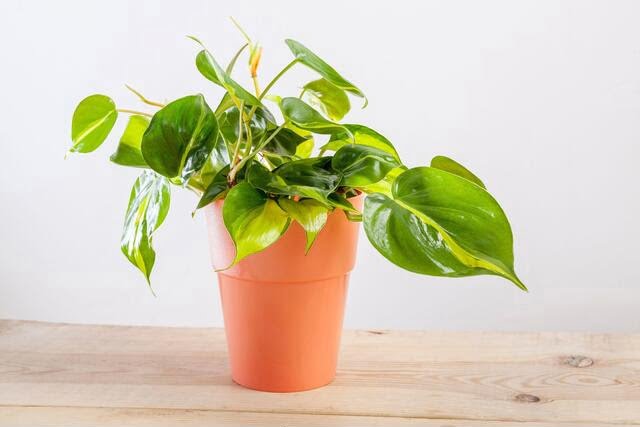
As we have seen earlier that there are plants to cover the walls or empty spaces in your home. But how about one to enhance your empty table or desk?
Why not do it with the Heart leaf Philodendron plant? The plant has dark green, shiny heart-shaped leaves which look incredible on a tabletop or even as a trailing plant. It has many other factors going for it as well; it tolerates neglect, is impossible to kill, and removes toxins from the air as well!
14. Indian Basil
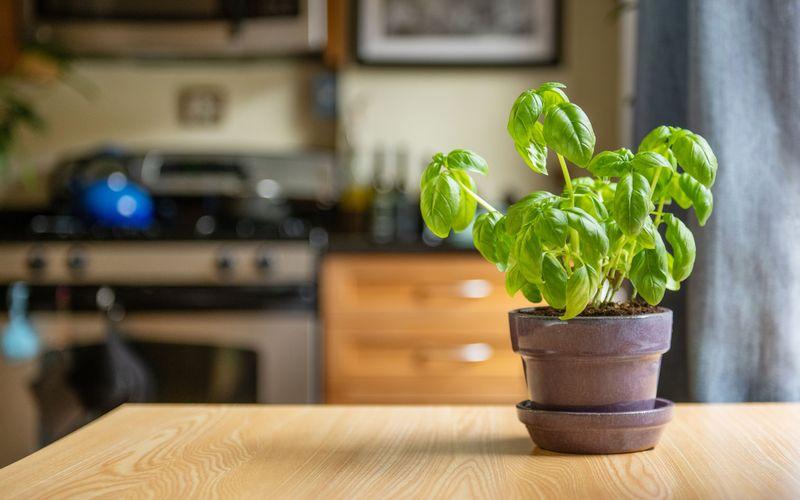
As far back as 5,000 years ago, this plant was cultivated in India. It is not surprising that Indians have had a long-standing cultural and religious relationship with the plant.
For centuries, it has been revered for its medicinal properties as a cure for several diseases. The dried leaves are also used as an insect repellent in Ayurvedic medicine. Additionally, Italian cuisine and Southeast Asian cuisine extensively use basil as a culinary herb to flavor their dishes.
15. Jade Plant

Want to grow a plant that requires little maintenance in India? Jade plants are an excellent choice. It is also called the friendship tree, money tree, and lucky plant. People believe that it brings good fortune to those who own it.
It does not require any watering and can thrive even during severe drought conditions. During winter, it requires monthly watering. You can place it by a window, and it will survive without assistance. If kept indoors, you might have to water it every week during the summer.
16. Fiddle leaf fig plant
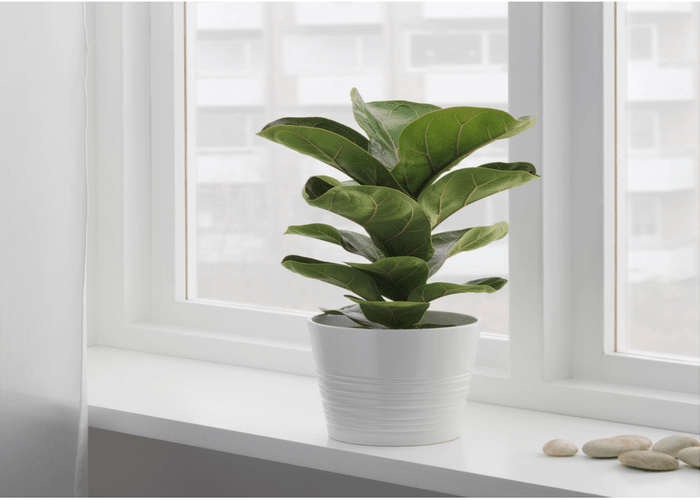
Do you like a tree with big, glossy leaves arranged on a thin trunk? Then you’ve found it!
Due to their beauty and elegance, fiddle leaf fig plants are in high demand today. Your dull corner or space can be made more exciting and interesting with this plant. With just partial indirect sunlight falling from the window, this classy plant can thrive with very little care.
The dark green violin-shaped, glossy leaves on a minimalistic thin trunk make this tree the topmost choice for interior designers. It absorbs all the toxic chemicals present indoors, this plant provides natural fresh air and, thereby, aids in a good night’s sleep.
They only need well-drained soil with a wet atmosphere and high humidity to grow healthier.
17. Pothos
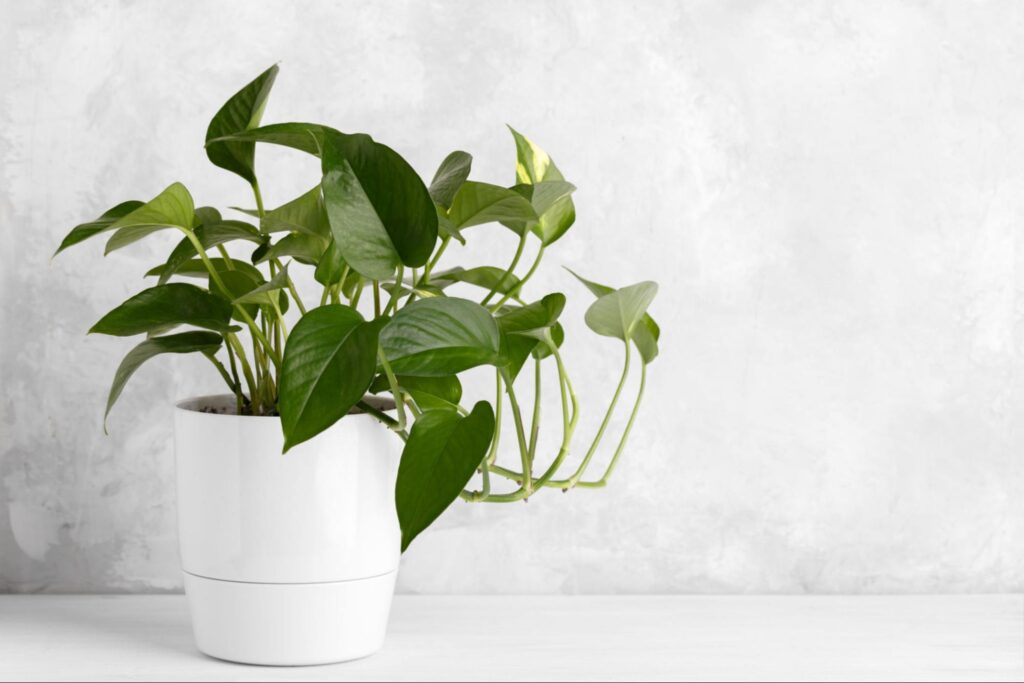
With its leafy vine, Pothos adds aesthetic value to your home. They are great indoor plants to have. They have heart-shaped green leaves and a waxy texture. In addition, they have a range of colors from pale green, white or yellow.
Pothos are excellent for purifying the air and taking in carbon dioxide while you sleep. Also, they do not require too much maintenance and can be used to adorn workplaces as well as homes.
18. Bromeliads

According to research, this beautiful plant is known to purify the air of benzene and absorb up to 90% of the chemical.
19. Red-edged Dracena

This colorful plant reaches up to 15 feet tall. Not only is it big, but it removes air pollutants like xylene, trichloroethylene, and formaldehyde.
20. Rubber Plant
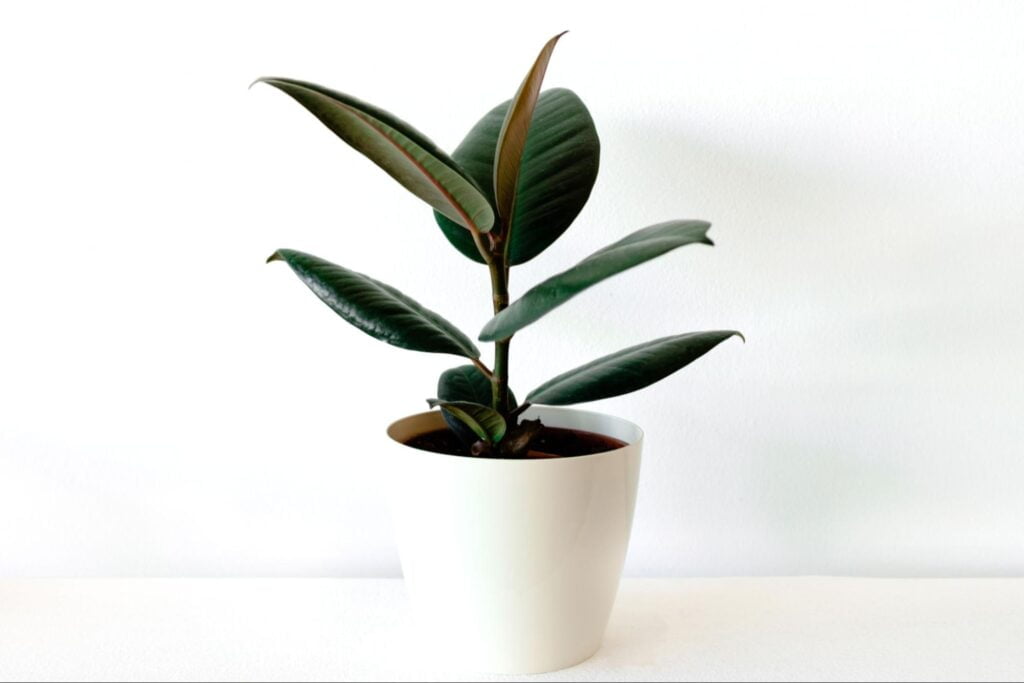
The Rubber plant is a great addition to your home. Its attractive foliage makes it a great focal point in your home. Also, its large leaves act as a magnet to toxins, bacteria, and mold spores. Over time, the rubber plant cleans your house of all these toxins for you.
21. Majesty Palm
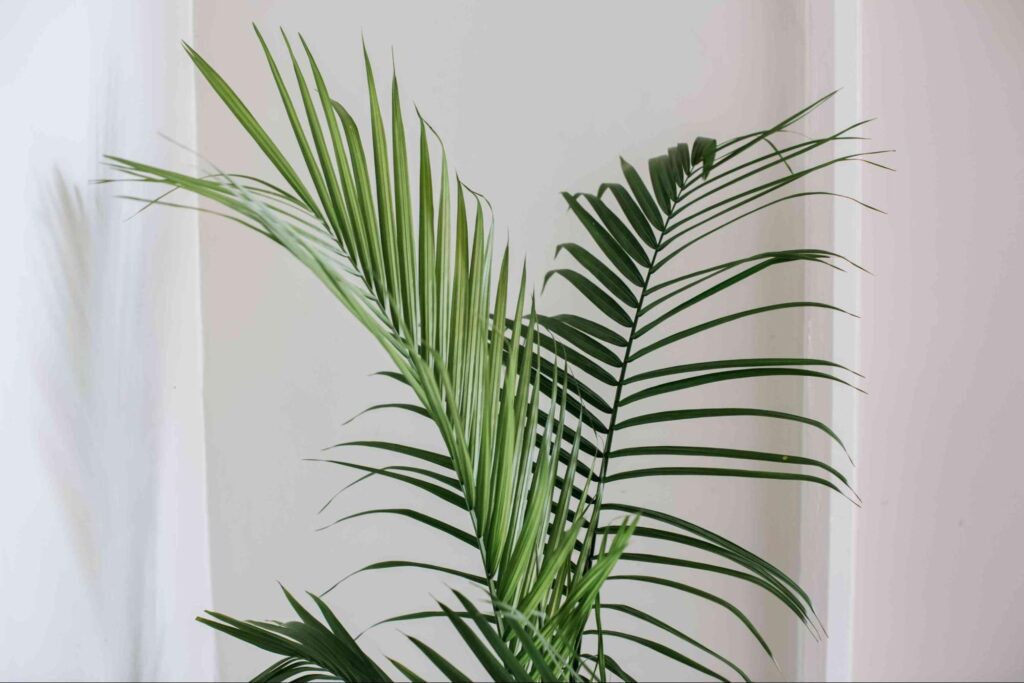
This pretty tropical plant looks great with any decor. Majesty Palm is surprisingly easy to keep alive. You just need to water well and place them near a sunny window.
In addition, this palm also has purifying properties. They purify the air and remove carbon dioxide from the home.
Isn’t it an ideal plant to keep your place beautiful and healthy?
22. Jasmine

It is believed that jasmine benefits our mental health primarily because of a chemical that eases anxiety, reduces mood swings, and enhances sleep.
23. Azaleas
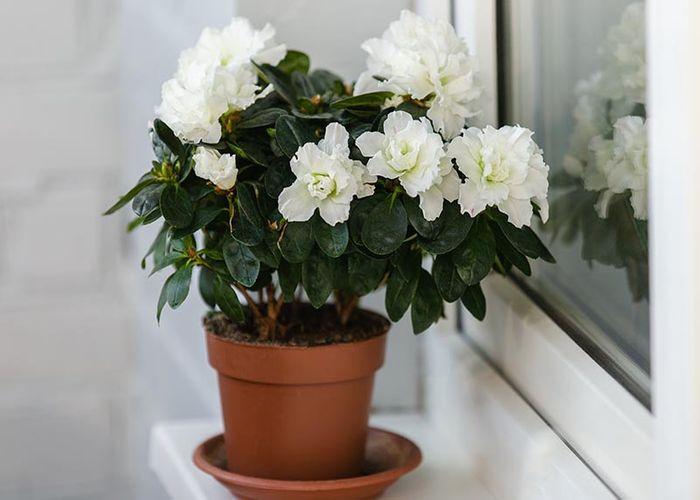
Apart from being an attractive flower, azaleas are also able to absorb chemicals, making indoor air healthier. Make sure your azaleas are misted often. Azaleas like a moist environment.
24. Lemongrass
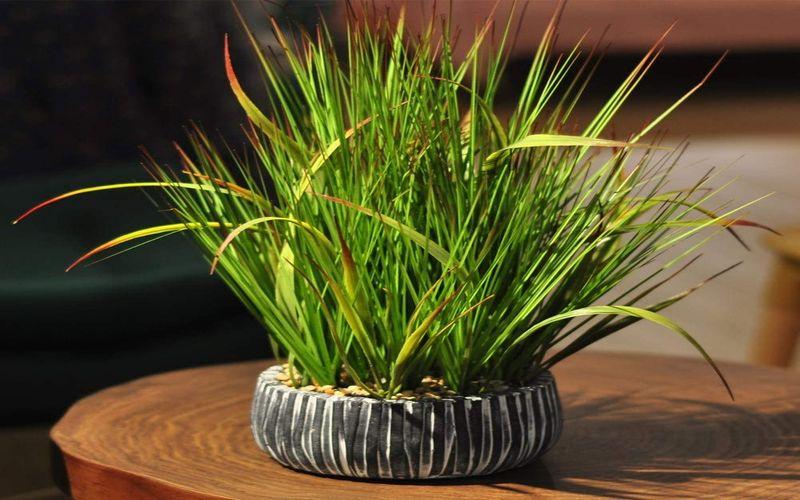
Decorative and fragrant, this fast-growing grass is a good choice for raised beds or containers in your patio garden. In addition, lemongrass is a natural remedy for boosting the immune system.
These plants have the antioxidant and anti-inflammatory properties of quercetin, which is useful in slowing cancer growth and even combating heart disease. Some studies have also suggested that lemongrass can help lower cholesterol levels.
You can easily snip off lemongrass and add it to stir-fries or salads for a citrusy flavor.
Conclusion
These indoor plants will give you a rejuvenating vibe and an aesthetic look to your home. We swear it would be an absolute treat to your eyes. Besides its several health benefits, it provides a very pleasant vibe to the entire house or workplace that uplift any kind of worry or stress.
There are many industrial or modern looks for indoor plants that help you to concentrate better on whatever you are doing. So, if you are looking to place the best indoor plants in your home for a new look, consider the above-mentioned best plants with additional health benefits.
Related Articles
- 15 Best Plants for Front Door Entrance India | Auspicious plants for front door
- 10+ Money plant Benefits That Will Make you Keep It In Your House
- Are Spider Plants Toxic to Cats?- 4 Ways To Prevent Your Cats From Eating Spider Plants.
- Best Plants for the House – 8 Top Apartment Plants That You Can’t Miss
- How to Braid Your Snake Plant: Tips and Care Guide
- 20+ Rare and Unusual Peace Lily Varieties You’ll Love



